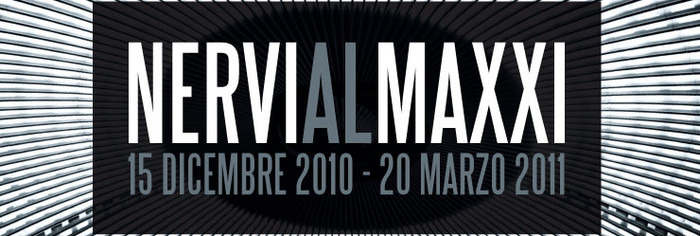Pier Luigi Nervi
15 Dec 2010 - 20 Mar 2011
PIER LUIGI NERVI
Maestro Costruttore
15 December 2010 – 20 March 2011
curated by Carlo Olmo
Roman section curated by Sergio Poretti and Tullia Iori
Engineer, architect, structural designer and builder but also writer and university lecturer. MAXXI is devoting an in-depth exhibition to Pier Luigi Nervi, master builder, within the ambit of a broad cycle of international exhibitions dedicated to the great Italian talent.
The first exhibition, inaugurated in Brussels last June, will be followed by others presenting new approaches and contents and after Rome and Turin, will continue in other European and American capitals.
During his long career, Nervi principally realised large structures and was one of the most remarkable “vehicles” of a an image of Italy around the world that was both scientific and creative. In Rome the exhibition will present in-depth research into the works created by Nervi for the 1960 Olympic Games, the fiftieth anniversary of which is being celebrated this year. The mature expression of continuous experimentation, these buildings may be seen within an historical perspective as among the most prestigious artefacts of the Made in Italy phenomenon. The Palazzetto dello Sport at the Flaminio, with its roof supported by a carousel of gigantic telamons and the cupola decorated with the optical motif of the rhomboidal ribbing. The Palazzo dello Sport at the EUR, roofed with a finely undulating cupola of 100 metres in diameter, below which the eighteen-year-old Cassius Clay won the light-heavyweight gold medal. The Stadio Flaminio, designed by Nervi together with his eldest son Antonio, still today impresses the rugby fans who gather on its curving terracing and beneath its elegant canopy. The Corso Francia viaduct, in the immediate vicinity, with its characteristic variable-section pylons.
The Roman initiative intends to valorize the previously unseen material conserved in the MAXXI Architecture collections, together with the publication of the complete inventory of projects and the photographic archive, material that will be made available on-line in the Archive Centre’s Study Room.
Maestro Costruttore
15 December 2010 – 20 March 2011
curated by Carlo Olmo
Roman section curated by Sergio Poretti and Tullia Iori
Engineer, architect, structural designer and builder but also writer and university lecturer. MAXXI is devoting an in-depth exhibition to Pier Luigi Nervi, master builder, within the ambit of a broad cycle of international exhibitions dedicated to the great Italian talent.
The first exhibition, inaugurated in Brussels last June, will be followed by others presenting new approaches and contents and after Rome and Turin, will continue in other European and American capitals.
During his long career, Nervi principally realised large structures and was one of the most remarkable “vehicles” of a an image of Italy around the world that was both scientific and creative. In Rome the exhibition will present in-depth research into the works created by Nervi for the 1960 Olympic Games, the fiftieth anniversary of which is being celebrated this year. The mature expression of continuous experimentation, these buildings may be seen within an historical perspective as among the most prestigious artefacts of the Made in Italy phenomenon. The Palazzetto dello Sport at the Flaminio, with its roof supported by a carousel of gigantic telamons and the cupola decorated with the optical motif of the rhomboidal ribbing. The Palazzo dello Sport at the EUR, roofed with a finely undulating cupola of 100 metres in diameter, below which the eighteen-year-old Cassius Clay won the light-heavyweight gold medal. The Stadio Flaminio, designed by Nervi together with his eldest son Antonio, still today impresses the rugby fans who gather on its curving terracing and beneath its elegant canopy. The Corso Francia viaduct, in the immediate vicinity, with its characteristic variable-section pylons.
The Roman initiative intends to valorize the previously unseen material conserved in the MAXXI Architecture collections, together with the publication of the complete inventory of projects and the photographic archive, material that will be made available on-line in the Archive Centre’s Study Room.

